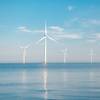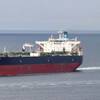Banking on US Shale Gas Boom, Asia Petrochemical Firms Switch to LPG
Asia petrochemicals firms are building tanks and retooling plants to store and process liquefied petroleum gas imported from the United States, counting on a flood of supply from the shale boom to replace costlier naphtha as a raw material.
Samsung Total Petrochemical, LG Chem and Royal Vopak are among a number of companies in Asia expanding import terminals or retrofitting plants over the next one to two years as they buy more LPG. The gas is used by petrochemicals firms to make a broad range of consumer and industrial plastics.
Asian petrochemicals firms have traditionally used naphtha as a raw material. They are now switching to LPG because rising U.S. supplies have pushed prices below those of both naphtha and LPG from their main supplier, the Middle East. A looming rise in tanker supply from next year will also help cut U.S.-Asia freight costs.
A cutback in naphtha use will hit key regional suppliers of the fuel such as India's Oil & Natural Gas Corp (ONGC) and Kuwait Petroleum, who are already being forced to cut the premiums they charge on naphtha sales.
The LPG buying will, however, help the United States trim an expected surplus of the gas and give the shipping industry more business at a time when global trade is still recovering from the aftermath of the financial crisis.
Petrochemicals firms in South Korea, Japan, Taiwan and Thailand have bumped up their use of LPG since June as the gas has cost at least $50 a tonne less than naphtha, said traders who track the Asian fuel market closely.
"The Far East has been using 350,000 to 400,000 tonnes of LPG a month since June," said a trader who tracks naphtha and LPG, compared with at most 250,000 to 300,000 tonnes a month in the past.
Rising supplies of LPG - a compressed mix of propane and butane, also used for heating and transport - have widened the price gap between LPG and naphtha. In June, the average price of the gas was $916 a tonne versus naphtha's $972, a spread of $56. In the same month of last year gas was $17 cheaper than naphtha, data from Ginga Petroleum showed.
Both naphtha and LPG are produced by refining crude. A barrel of crude typically has a 3 percent LPG yield while for naphtha it is more than 10 percent. LPG is also obtained in the process of extracting natural gas.
The design of petrochemical plants in Asia, though, constrains how much LPG can replace naphtha. Typically, up to 15 percent of naphtha can be replaced. Even within that limit, plants in Asia have room to raise LPG use, which may mean more imports of the gas.
U.S. LPG Surplus
The shale boom is expected to spur U.S. LPG production. By 2019, the nation's surplus of the gas will double to 550,000 barrels per day (bpd) from 270,000 bpd in 2014, said U.S.-based consultancy firm ESAI.
Asia now accounts for more than a quarter of all U.S. LPG exports and that is set to rise steadily this decade. Exports to Asia could rise to 230,000 bpd by 2019 from 70,000-90,000 bpd this year, said Vivek Mathur, senior analyst at ESAI.
Supplies from the Middle East will also grow but exports may not rise as much as U.S. shipments. And Asia is eager to get its hands on U.S. LPG.
Chinese energy giant CNOOC Group's $8 billion petrochemical complex in Huizhou city aims to use U.S. LPG, a senior executive of the project's contractor said this week.
Samsung Total will build a 40,000-tonnes LPG tank to ride on the shale boom, a spokesman said, without giving a construction timeline.
South Korea's LG Chem will raise the LPG volume used by its crackers by half to 66,000 tonnes a month after October maintenance at its Yeosu complex.
And in Singapore, Royal Vopak will build an LPG storage facility with an initial capacity of 80,000 cubic meters to give petrochemical makers an alternative to naphtha.
Naphtha sellers are feeling the pressure. ONGC sold a September cargo at premiums to Middle East quotes of about $14.50 a tonne, its lowest in over two years.
The situation will worsen for them when new tankers are ready and the Panama canal expansion is completed by end-2015. Some 36 new LPG tankers are scheduled for delivery in 2015 and another 38 in 2016 versus five this year, said a Southeast Asia-based LPG trader, potentially helping lower freight rates.
U.S. LPG is available now for loading below $600 a tonne compared to the $760-$780 for the gas from the Middle East. Even with current freight rates from America to the Far East higher compared to rates from Middle East to Asia, U.S. LPG works out a cheaper option for Asian users.
"LPG prices should be more competitive versus naphtha due to the amount of supplies available," said another LPG trader.
(By Seng Li Peng; Additional reporting by Meeyoung Cho in SEOUL; Editing by Muralikumar Anantharaman)













